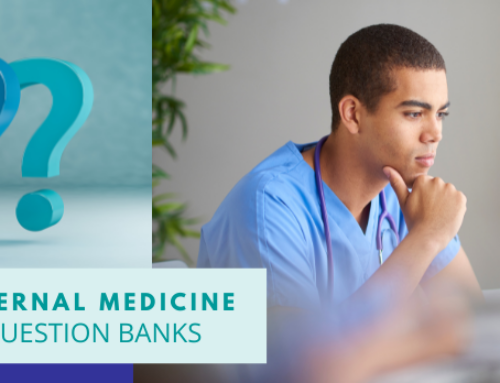It’s a cold, clear morning in December. The lights in the operating room shine directly over your patient; there are no shadows. Sterile instruments line up at your fingertips, and your hands are scrubbed and gloved. Although you’ve performed this procedure a thousand times, a jolt travels through your nerves as you prepare to begin.
What could go wrong?
How will you know if you’ve erred, and how can you recover if you do?
In developed countries, where modern medicine has been steadily improving patient outcomes for the past century, some may argue that we’ve done all that we can — with our low infection rates and our ethics committees, oversight, and (as a last resort) malpractice suits — and that patients are as safe in the hands of their physicians as they’re going to get.
And yet, every few years, a new method emerges (checklists, for example) that sets an even higher standard for patient safety and a lower threshold for failure. As Atul Gawande wrote in The Checklist Manifesto, “the volume and complexity of what we know has exceeded our individual ability to deliver its benefits correctly, safely, or reliably.”
It’s increasingly clear that no one physician or even one practice or hospital can reach perfection — but we can always aim to improve.
What IS Patient Safety?
The report “To Err is Human: Building A Safer Health System” by the Institute of Medicine (IOM) changed the landscape and engaged the public and physicians in talking about quality, helping the medical world realize that the principal of “above all, do no harm” was not, in fact, true. We were causing harm, and a lot of deaths.
Leading physicians and medical boards disagree about which components of medical knowledge and patient care, not to mention practice assessment, make up the topic area of patient safety. However, some groups have boiled it down to three areas including tools and routines, systems and culture, and prevention of harm.
Technology, Methods, and Tools
The safety of patients can be improved greatly through technology, methods, and tools, especially in hospitals — but also in group and private practice.
Software and routines can aid in evaluating events, making informed decisions at the point of care, and preventing harm. For example, something as simple as using a proven method to use patient identifiers appropriately can minimize the risk of administering a mismatched blood product or the wrong medication to a patient.
Electronic health records (EHR) have been shown to greatly improve patient care, and the U.S. Health Information Technology department endorses EHR use and points out their many benefits, including
- Gathering all relevant information (lab results, etc.) in one place
- Support for therapeutic decisions
- Enabling evidence-based decisions at point of care
Many other technologies are readily available and being discussed widely for their pros and cons.
The Whole and Its Parts
Systems thinking, in which we attempt to understand how the pieces that make up a complex system affect one another and the system as a whole, can revolutionize the way medicine is practiced today.
The “culture of safety” that we all aspire to requires a shift in the way we report errors (omission of care is often underreported), think about adverse events, empower hospital nursing staff and assistants, and involve patients in their own care. Organizational culture will not change itself, nor will people change overnight or without leaders pushing for change.
Managing risk in an environment full of life-and-death decisions is just part of the day-to-day life of every physician. The challenge is to assess the risks accurately and to communicate them transparently. Improving communication and coordinating care among medical team members, including improving the timeliness of critical follow-up, is both a systemic and an individual responsibility.
Understanding cognitive heuristics (mental shortcuts used in reasoning) and thinking about one’s own cognitive processes (metacognition) may lead to increased awareness of biases and improved diagnostic accuracy.
Preventing Harmful Errors
There are three key areas of preventing harm: preventing adverse drug events, preventing infections, and preventing falls.
According to the U.S. Department of Health and Human Services, adverse drug events account for over 3.5 million physician office visits, an estimated one million emergency department visits, and approximately 125,000 hospital admissions each year.
ABIM defines “medication safety” as follows:
…efforts to prevent adverse drug events from…harmful drug interactions, patient identification errors, dosage errors, or drugs given despite contraindications.
Infection prevention in both the inpatient and outpatient settings is a key component of patient safety — and it’s what most of us associate primarily with this term. Hospital-acquired infections as well as procedure-related infections in the office setting are both preventable causes of patient morbidity and mortality.
Finally, preventing falls, which are the leading cause of hip injury among older adults, has to be included in any list of patient safety requirements. Simple patient screening or assessment for the risk of falls can improve outcomes across the board.
ABIM Patient Safety Requirement for MOC
ABIM has tried to emphasize the importance of doctors’ learning the best practices for ensuring patient safety through its Maintenance of Certification program.
Patient Safety is a MOC requirement that was introduced in 2014. ABIM-board-certified physicians need to complete this requirement every 5 years.
ABIM states on its website:
The patient safety criteria include two components: content and format. To meet the patient safety requirement, an activity must meet BOTH the content criteria and the format criteria.
To meet the patient safety requirement, an activity must substantively address one of the following patient safety related topics:
- Epidemiology of error
- Culture of safety
- Fundamentals of patient-safety improvement
You can meet the patient safety requirement with either MOC Part 2 (Medical Knowledge) or MOC Part 4 (Practice Assessment) activities.
Meet Your MOC Patient Safety Requirement in NEJM Knowledge+
Answering the case-based questions in NEJM Knowledge+ Internal Medicine Board Review allows you to meet the ABIM patient safety requirement. We have ensured that patient safety is covered in the 240 ABIM MOC questions that are available in the subspecialty modules. If you answer all of these questions correctly, you earn 80 MOC points — and, in the process, meet your patient safety requirement. We automatically transmit your MOC points to ABIM.
Transforming Care
It’s easy to get discouraged by all the scorekeeping and credit-counting involved in the patient safety requirement, but let’s try to keep our eyes on the prize — a transformation of care to the highest standards of safety.
Remember, in obstetrics, a simple scoring system changed the outcomes for newborns forever. Atul Gawande writes in the New Yorker:
The Apgar score, as it became known universally, allowed nurses to rate the condition of babies at birth on a scale from zero to ten. An infant got two points if it was pink all over, two for crying, two for taking good vigorous breaths, two for moving all four limbs, and two if its heart rate was over a hundred. Ten points meant a child born in perfect condition. Four points or less meant a blue, limp baby.
The score was published in 1953, and it transformed child delivery. It turned an intangible and impressionistic clinical concept—the condition of a newly born baby—into a number that people could collect and compare. Using it required observation and documentation of the true condition of every baby. Moreover, even if only because doctors are competitive, it drove them to want to produce better scores—and therefore better outcomes—for the newborns they delivered.
Have you made an effort to improve patient safety in your practice? Is the patient safety requirement a priority for you? Please share your stories in the comments.









The greatest gap has been and is between what we know and what we do.
Communication – collaboration and coordination are the keys to attain the goal, however, the prerequisite is commitment and to build Trust through transparency and transactions (communication). In the absence of trust, little reporting occurs and that too may be incorrect. It is worthwhile to remember the dictum that no data is better than wrong data. It is better to strive for the trust when data can be reported and not perceived as complaint.